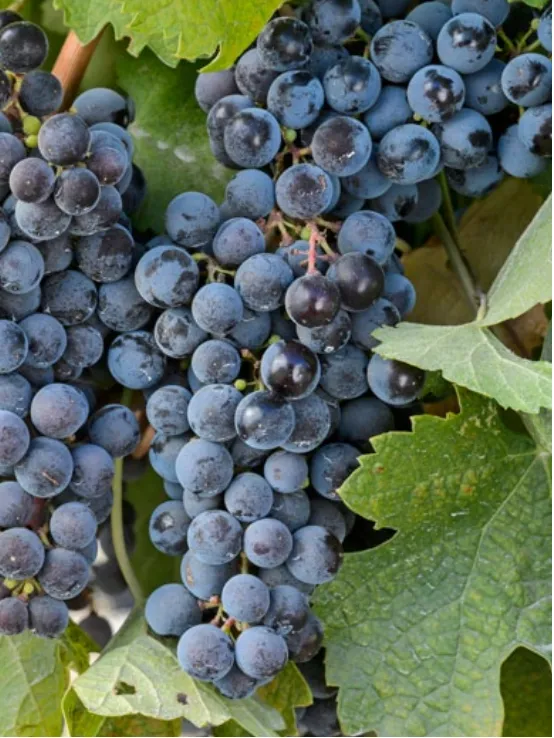A 95-pound Rhodesian Ridgeback, a dog originally bred to hunt and corner lions on the African savannas, was killed last week in Calistoga by a swarm of bees.
The incident took place on Bennett Lane, a bucolic and otherwise tranquil setting just west of the city limits, popular among locals for daily exercise and dog walks.
The victim, a 10-year-old female named Merlot, was a frequent visitor to the location and was off leash when she wandered into the vineyard where brood boxes were kept.
Dr. Steve Franquelin of the Calistoga Pet Clinic attended the dog following the attack, but said she had “hundreds of bites” and couldn’t be saved.
“Poor Merlot never had a chance,” he said.
Greg Music, a biologist with the Napa County Agricultural Commissioner who helps manage beekeeper registrations, said a bee attack that resulted in the death of a dog as big as Merlot is very rare. He said he’d never heard of one happening in Napa County.
Andre Napolitano, Deputy Agricultural Commissioner, notified the dog’s owners that his office has opened an investigation into the incident.
Kenny Steinthal, who along with his wife Kelly Nelson, raised Merlot from a puppy, witnessed the attack. He called it “something out of a horror movie.”
“She was literally covered head to toe,” he said. “We’re not talking about a small dog here. We’re talking about a very large dog that can usually defend herself, but she was totally swarmed over. I mean, the bees were crawling in her eyes, in her ears.”
Some in the beekeeping community initially questioned whether honeybees could be responsible, suggesting that wasps or yellow jackets, which are far more aggressive and dangerous, might have been responsible for the attack.
But Franquelin found stingers still attached to the dog’s body, which indicates that bees were most likely responsible, said Elina Niño, apiculturist at the University of California, Davis.
“Wasps do not leave their stingers in their victim,” she said. “Honeybees have these little barbs on their stingers, so it’s really difficult for them to pull them out.”
Kenny Steinthal and others who witnessed the attack were also adamant that the attackers were bees.
Bee venom contains proteins and enzymes that target the immune system once inside the body. An average-size adult human can sustain a maximum of about 1,100 stings. It is unclear exactly where the incident occurred, although the Steinthal-Nelsons pointed to an area where Bennett Lane and Evey Road intersect near the Napa River.
The Steinthal-Nelsons said that the bee boxes were removed after the attack. It is unclear exactly who owns the boxes.
There is an expectation that Napa County officials will conduct a test of the genetic background of the bees to determine whether they were related to African bees, which are known for being especially dangerous and are well established in California.
But Niño, who works closely with beekeepers statewide on sustainable methods for managing bees, said she would be surprised if the bees that took part in last week’s attack were “Africanized.”
She said that beekeepers monitor their colonies for signs of genetic infiltration and take steps to replace queen bees that show any unwanted traits.
“The beekeepers don’t want to be dealing with this,” she said. “Can you imagine if you were to go into a hive, having to deal with something so defensive as this?”
She said that most of the Africanized bees in California are feral, living on their own in unmanaged settings.
But Niño said that even the typical California honeybee can be dangerous when threatened.
“This is a pet peeve of mine,” she said. “Bees are not aggressive, they’re defensive. But if they are disturbed, they can trigger a protective reaction.”
She theorized that the hive in question may have been disturbed by another animal either the day before or maybe just hours before the dog happened by.
Once the first bee makes contact and strings what is believed to be the threat, it sends an alarm to the other bees in the hive, which join in ever-increasing numbers, Niño said. Such incidents took place in California long before the African bees arrived, she said.
Niño said domesticated bees play a critical role in the ecosystem, as well as in the state’s billion-dollar agriculture industry.
“We would not have more than 30 crops in the state of California if it wasn’t for the managed bees,” she said. “So, they’re going to be here.”
She said that’s why people should be cautious. “It’s important to remind folks that they should not go near hives, and they shouldn’t let their kids or their animals near them,” she said.








